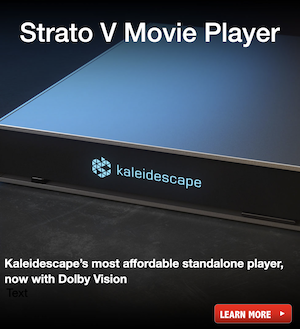(January 8, 2025) Challenging an immersive landscape dominated by a 500-pound gorilla in Dolby, Samsung has introduced Eclipsa Audio, a new 3D sound technology developed in partnership with Google. This tech innovation will be integrated across Samsung's 2025 lineup of TVs and soundbars, ranging from the Crystal UHD series to flagship Neo QLED 8K models.
According to Samsung, Eclipsa Audio allows content creators to manipulate audio data such as sound placement, intensity, and reflections, creating an immersive soundscape tailored to the content and listening environment. This technology is set to distinguish itself by enabling seamless playback on Samsung’s 2025 devices, making high-quality 3D audio more accessible to a broader audience.
Taeyong Son, Executive Vice President and Head of the R&D Team at Samsung Electronics, highlighted the company’s commitment to innovation: “We are proud to lead the industry with the integration of Eclipsa Audio into our 2025 TV and soundbar lineup. This innovation opens new possibilities for immersive audio experiences and reinforces our commitment to shaping the future of home entertainment.”
A key feature of Eclipsa Audio is its integration with YouTube. Starting later in 2025, content creators will have the ability to upload videos featuring Eclipsa-enabled audio tracks. These tracks will allow viewers with compatible Samsung devices to experience three-dimensional soundscapes tailored specifically for their content. Samsung’s partnership with Google also emphasizes the potential to expand immersive sound offerings across broader platforms.
Of course, Eclipsa isn't breaking ground with its launch, as it's entering a competitive landscape currently inhabited by established technologies like Dolby Atmos, DTS:X, and Auro-3D. Atmos has cemented itself as the genericized term used to describe immersive audio, carrying serious brand caché and widespread market use. DTS:X has attempted to challenge Atmos by offering what it says are flexible speaker configuration requirements, though its market gains have been modest at best. And despite being the defacto founder of 3D audio, Auro and its unique take on vertical sound is still fighting to stake a meaningful claim within the segment.
Samsung’s approach with Eclipsa is anchored by the notion of out-of-the-box simplicity, where its 3D audio technology works seamlessly with standard TV and soundbar setups, eliminating the need for specialized equipment. To help ease integration, Samsung and Google are collaborating with the Telecommunications Technology Association (TTA) to develop a certification program. The idea is that buyers will be able to quickly identify equipment capable of producing consistent audio quality across devices in their system.
Still, the questions remain: Is a new audio format necessary, and will a consumer base finally comfortable with Atmos as a recognizable technology have the interest in familiarizing itself with yet another tech name?
Time will tell.
Related Reading:









